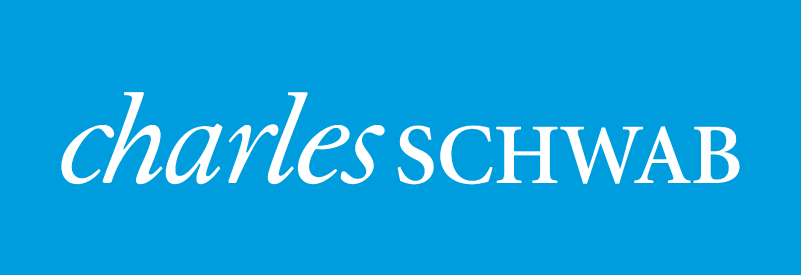FOR THE MONTH OF JANUARY
January kicked off the new year with a thud, fueled by inflation/policy dynamics, geopolitical anxiety, robust corporate earnings, and ongoing Covid induced economic imbalances. Bond and equity markets adjusted to a gradual yet notable shift in Federal Reserve policy intent for 2022 by pulling forward expectations for increases in the Fed funds rate and the conclusion of quantitative easing. Markets moved from early January pricing in three rate hikes in 2022 to five or six by early February and to a more rapid tapering pace of the quantitative easing program, now set to conclude by mid/late March. Russia-Ukrainian tensions continued to build in January with energy markets pricing in the potential for wide scale supply disruptions, sending Brent crude oil prices up 20% for the month. Early results for fourth quarter corporate earnings painted a rosy picture with blended S&P 500 earnings +29.2% and revenues +15%, leaving the market priced at 19.7x P/E with many eyes on potentially vulnerable profit margins and surging CAPEX trends. The Omicron surge, and multitude of supply and demand distortions it fostered, quickly peaked and receded in January leaving many with the hope that pandemic trends may be finally shifting toward endemic status as we move into spring of 2022.
U.S. equity markets finished the month down 5.2% while international developed (-4.8%) and emerging markets (-1.8%) fared somewhat better thanks to their underlying market composition, cheaper valuations, and constructive growth outlooks. Value oriented stocks dramatically outperformed growth stocks during the month and large caps outperformed small caps. Bond markets weathered a sharp increase in interest rates with two year yields up 0.45% and ten year yields up 0.27% in what was also a notable flattening of the yield curve. Rising rates and an increase in credit spreads (high yield from 3.10% to 3.63%) resulted in one of the most difficult starts to the year for bonds on record as the Bloomberg Aggregate fell 2.15% and Bloomberg High Yield fell 2.73%.
Market Anecdotes
· Fourth quarter earnings reports came in with blended sales and earnings growth numbers of 15% and 29.2%, respectively, with 56% of the S&P 500 companies reporting. Top-line growth marked the 3rd highest on record, and earnings’ beats of 77% marked the 4th best on record.
· In a volatile month for the Nasdaq which saw a 15%+ correction, the end of January marked the best two-day rally dating back to April 2020 and the best two-day finish to a month since 1987.
· Both Tom Lee (FSI) and BCA Research made note that retail investor sentiment marked a fresh eighth year low in January, which has historically been a reliable contrarian indicator.
· For the first time since Jimmy Carter, a sitting POTUS has called on the Federal Reserve to raise interest rates, acknowledging the political costs of high inflation outweigh the cost of slowing the economy and potentially disrupting capital markets.
· BCA Research noted the pronounced need to restock inventories is likely to feed the U.S. economic expansion in the coming year through increased capital goods orders and capital expenditures to keep up with strong sales and demand.
· The January U.S. payroll report certainly swayed market policy expectations toward a more hawkish approach in 2022 with five hikes now priced in and essentially a coin flip for a sixth.
· Bond markets have been busy pricing in the monetary policy trajectory with 2yr UST yields now back at pre-Covid levels (January 2020) and, prior to that, at a level last seen five rate hikes into the last tightening cycle back in 2017.
· As yields globally are rising, the amount of negative yielding debt outstanding has declined 70% since late 2021 and reached its lowest level since March 2020.
· The ECB kept rates unchanged last week but certainly made note that Euro-area inflation overshot estimates by the largest margin on record (5.1%a vs 4.4%e), fueling a more hawkish leaning narrative looking forward.
· The BoE voted to raise the policy rate for the second consecutive month since 2004 by 25bps in a surprise 5-4 split decision. The other 4 voting members pushed for a 50bps increase in an attempt to reign in England’s recent 5.4% CPI reading.
· The PBOC cut policy rates (1yr lending and 7-day reverse repo) by 10bps in response to economic weakness resulting from both Covid and regulatory headwinds.
· The BoJ remained cautiously optimistic in their January meeting with their economic outlook and kept policy rates unchanged as expected.
Economic Release Highlights
· The January jobs report was beyond the highest estimate and tripled the consensus (467k v 150k) while a large increase in labor market participation (62.2%) and record numbers of workers missing due to illness took the unemployment rate up one tick to 4.0%.
· The January ISM Manufacturing and Services index readings remained very elevated and in line with expectations, registering 57.6 and 59.9 respectively.
· Final Markit PMI data (M, S) for January across the U.S. (55.5, 51.2), EU (58.7, 51.1), and global (53.2, 51.3) all pointed to slowing but growing levels of manufacturing and services activity.
· January’s UofM Consumer Sentiment (67.2 v 68.6) and Conference Board Consumer Confidence (113.8 v 111.2) readings were both within consensus range.
· The Personal Income and Outlays report metrics were in line with consensus with PCE Inflation (YoY, MoM) of 5.8% and 4.9% respectively and monthly PCE of -0.6%.
· Housing Starts (1.702mm) and Permits (1.873mm) both handily outpaced estimates and increased over the prior month but Existing Home Sales cooled off from prior month’s 6.46mm level and fell short of consensus (6.1mm vs 6.4mm).




Leave a Reply